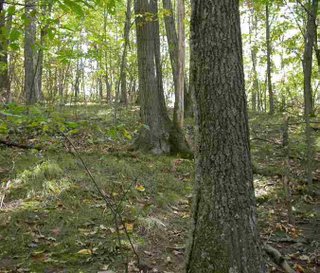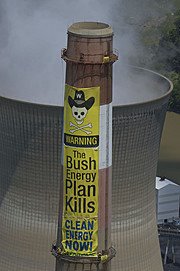
The following is Michigan Senator Debbie Stabenow's letter to Black Bear Speaks, received today.
I am writing to update you regarding important developments in our fight to stop the dumping of Canadian trash in our beautiful state.
Homeland Security report confirms security threat
The Homeland Security Office of the Inspector General has finally completed their report on Canadian trash trucks entering Michigan. I requested this report with Senator Levin and Congressman Dingell in October of 2003 because of grave concerns I had regarding threats to our national security created by the influx of Canadian trash trucks. The findings of the report will come as no shock to you or other Michigan citizens -- the current inspection and screening of trash trucks presents a serious risk to our national security and public health. You can read a short summary of this report on the Department's website.
Details of report not made public
To my great disappointment, Homeland Security has refused to release the details of this report to the public even though it is not classified information. I am fighting to make these important facts available to people living in Michigan so that we can all understand the risk to our communities. On March 3, 2006, I joined Senator Levin and Congressman Dingell in demanding that Homeland Security Secretary Michael Chertoff make the full unclassified report available to the public.
Senate budget bill lays groundwork for trash inspection fees
Ultimately, we need to stop these trash trucks altogether. But until that happens, our safety and security depend on the effective screening of their contents. I believe that Canada has an obligation to pay for these inspections. In the recent budget bill, I authored a provision that passed the U.S. Senate, which lays the groundwork for the United States to charge up to $45 million a year in inspection fees to Canadian trash truck companies. These fees equal $420 per truck crossing into Michigan.
This provision would ensure that American taxpayers do not pay the costs of implementing the security recommendations of the Inspector General's report. It would dramatically increase the cost of sending trash into our state (which I hope will eliminate the incentive for them to dump their trash here.)
EPA treaty still not enforced by the Administration
This Administration, through the Environmental Protection Agency (EPA), continues to have the power to stop the trash today, but has refused to use its authority under an existing treaty with Canada. I continue to pressure top Administration officials to use the legal powers they already have. I met with the new Administrator of the EPA, Steven Johnson, and gave him our petition signed by over 171,000 Michigan citizens demanding a stop to this unprecedented dumping. I will continue to pursue legislation to address this issue and to force the EPA to use their authority to stop the trash.
Inspections and screening critical to national security
Incredibly, even as we fight to prevent Canada from turning Michigan into one big landfill, this month a Canadian trash truck spilled sewage along I-275 in Wayne County, forcing local police to shut the overpass for hours while it was cleaned up. The law I authored in 2003 that requires the use of high tech screening equipment for trash truck inspections was an important safety step, but the Homeland Security report and this most recent trash spill highlight the urgency of this issue and the need for further action.
Inadequate screening of trash trucks makes them attractive targets for criminal and terrorist activity. In recent years, border inspections have found hazardous medical waste, radioactive materials, illegal drugs and counterfeit currency in Canadian trash shipments.
Our online petition is still active. If you know anyone who would like to sign the petition and receive these periodic updates, they can do so by going to www.stabenow.senate.gov/stoptrash.
Thank you so much for your on-going interest and concern. I am offended, as I know you are, that the dumping continues. I will continue to do everything in my power to stop the trash. As always, please feel free to contact my office on this or any other issue of concern to you.
Sincerely,
Debbie Stabenow
United States Senator




